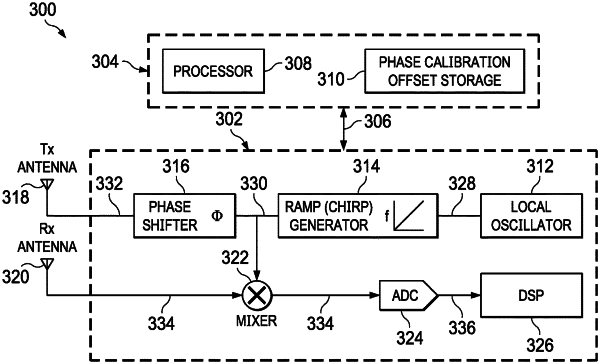| CPC G01S 13/584 (2013.01) [G01S 7/40 (2013.01)] | 19 Claims |

|
1. A radar transceiver comprising:
a chirp generator configured to generate chirp signals;
a phase shifter coupled to the chirp generator to configured to receive a frame of the chirp signals, wherein the phase shifter is controlled to apply an induced phase shift in a first subset of chirp signals of the frame of chirp signals, the frame of the chirp signals further including a second subset of the chirp signals, the first and second subsets of chirp signals being mutually exclusive;
transmit and receive circuitry configured to transmit the frame of chirp signals including the first and second subsets of chirp signals, and receive reflected signals based on the transmitted frame of chirp signals;
an analog-to-digital converter (ADC) configured to generate digital signals based on the received reflected signals, the digital signals including a first subset of digital signals corresponding to the first subset of chirp signals and a second subset of digital signals corresponding to the second subset of chirp signals; and
processing circuitry coupled to the ADC and configured to:
perform at least one Fast Fourier Transform (FFT) on the first subset of digital signals to generate a first range-Doppler array, and perform at least one FFT on the second subset of digital signals to generate a second range-Doppler array,
identify peaks in the first and second range-Doppler arrays to detect an object in a field of view of the radar transceiver, and
compare a phase of a peak at a position in the first range-Doppler array with a phase of a peak at a corresponding position in the second range-Doppler array to determine a measured phase shift between the two peaks.
|